
The Bārûtu, the “art of the diviner,” is a monumental ancient Mesopotamian compendium of the science of extispicy or sacrificial omens stretching over around a hundred cuneiform tablets which was assembled in the Neo-Assyrian/Babylonian period based upon earlier recensions. At the Assyrian court, the term extended to encompass sacrificial prayers and rituals, commentaries and organ models. The ikribu was the name of collections of incantations to accompany the extispicy. The bārûtu’s extant predecessors date back to Old Babylonian times with the liver models from Mari (pictured right) and where the order of the exta were largely fixed.
- Ivan Starr (1992). “Chapters 1 and 2 of the bārûtu”. State Archives of Assyria Bulletin. 6: 45–53.
- Eleanor Robson (2011). “Empirical scholarship in the Neo-Assyrian court”. In Gebhard J. Selz; Klaus Wagensonner (eds.). The Empirical Dimension of Ancient Near Eastern Studies. LIT Verlag. pp. 618–624.
The task of the bārû, or diviner, was summarized as lipit qāti hiniq immeri naqē niqē nēpešti bārûti, “the ‘touch of hand’, the restriction? of the sheep, the offering of the sacrifice, the performance of extispicy.” This required elaborate ritual purity, achieved through washing hands and mouth, donning fresh clothing, placing tamarisk and cedar into the diviner’s ears, anointing and fumigation with sulfur – all measures to avoid the outcome of the apodosis lā ellu niqâ ilput, “an unclean person has touched the sacrifice.” The autopsy then proceeded in a counter-clockwise direction, beginning with the liver, the lungs, then the breastbone, vertebrae, ribs, colon and finally the heart.
- Ulla Jeyes (1991–1992). “Divination as a science in ancient Mesopotamia” (PDF). Jaarbericht Ex Oriente Lux. 32: 23–41. Retrieved 2020-06-28.
The text
The work is particularly difficult to interpret due to the extensive use of graphemes, but included an estimated 8,000 omens. These were the accumulation of a millennium and a half of observations of political, social and private events and the divinatory signs that accompanied them but bereft of their chronological context or other identifying marker and stylistically posed in the form of a prediction. Occasionally, an attribution is made to a king, but it is generally archaic:
- “Omen of Šarru-kīn whose troops were shut in by a rainstorm and exchanged weapons among themselves” (padānu tablet 4),
- “Omen of king Amar-Su’ena, who was gored by an ox, but died from the bite of a shoe [i.e., an infection of the foot[” (padānu commentary),“Omen of king Tiriqqan, who in the midst of his army took flight” (pān tākalti tablet 6),
- “Omen of king Rimuš, whom his courtiers killed with their seals” (pān tākalti tablet 13), or
- “Omen of the Apišalian, whom Narām-Sîn captured by tunnelling.
- Eleanor Robson (2011). “Empirical scholarship in the Neo-Assyrian court”. In Gebhard J. Selz; Klaus Wagensonner (eds.). The Empirical Dimension of Ancient Near Eastern Studies. LIT Verlag. pp. 618–624.
- Ulla Koch-Westenholz (2000). Babylonian Liver Omens: The Chapters Manzazu, Padanu, and Pan Takalti of the Babylonian Extispicy Series Mainly from Assurbanipal’s Library. Museum Tusculanum.
- Andrew R. George (2010). “The Sign of the Flood and the Language of Signs in Babylonian Omen Literature”. Proceedings of the 53e Rencontre Assyriologique Internationale, Vol. 1: Language in the Ancient Near East, part 1. Eisenbrauns. p. 328. doi:10.5325/j.ctv1bxh2q3.14. ISBN 9781575066394. S2CID 55742574. Retrieved 2020-06-28.
- O. R. Gurney (October 1949). “Old Babylonian Omen Texts (book review)”. Antiquaries Journal. 29 (3–4): 212. doi:10.1017/S0003581500017327. S2CID 163628628. Retrieved 2020-06-28.
Some of the signs are identified as pitruštu, “ambiguous,” or by another “wild card” nipḫu, “unreliable,” while others echo modern concerns, šatammu ekalla imallalu, “the accountants will plunder the palace!” Some predict the weather: enūma lullik šamū ikallâni, “whenever I want to go out rain will stop me.” Some give quite specific predictions, edû rākib imēru irruba, “a famous person will arrive riding on a donkey,” while others are vague, ina ūmi rūqi rigmu, “long-term forecast: lament.” Some predict li’ibu-, masla’tu– or qūqānu-disease or other disorders: “If the pleasing word is split above and below: the man’s teeth will come loose.” The majority of the omens, however, concern royal and military affairs.
- Ulla Koch-Westenholz (2000). Babylonian Liver Omens: The Chapters Manzazu, Padanu, and Pan Takalti of the Babylonian Extispicy Series Mainly from Assurbanipal’s Library. Museum Tusculanum.
The parts of the bārûtu
The barūtû is divided into ten “chapters” (summarized in the table below), each dealing with a different aspect of entrail divination, but predominantly concerned with the examination of the ṭuppu ša ilī, the “tablet of the gods,” or the liver (amūtu). The Babylonian and Assyrian versions vary slightly in arrangement due to the Babylonian predilection for sixty line tablets.
| Cuneiform | Akkadian | Name and Subject |
|---|---|---|
| BE GIŠ.DAL | šumma išru | The “fetlocks” (kursinnu) or “thighs”? Also includes KIŠIB.MEŠ (kunukkū), the “seal (impression)” = vertebrae, KAK.TI (sikkat ṣēli) the rib cage, najabtu, “the peg” or the floating ribs and GAG.(=KAK.) ZAG.GA (kaskāsu), the breastbone Tablet count 4 |
| BE ŠÀ.NIGIN | šumma tirānu | The “intestines” Parts of the sheep other than the liver and lungs, and includes the coils or convolutions of the sacrificial animal’s colon and the kidneys (BIR, kalītu) Tablet count 8 |
| BE NA | šumma manzāzu | The “presence” or “station” The liver examination commences with the groove or reticular impression on the liver’s lobus sinister, known as the IGI.BAR or KI.GUB (naplastum), in the Old Babylonian period Tablet count 6 |
| BE GÍR | šumma padānu | The “path” Another groove on the liver’s lobus sinister, the abomasal impression on the ventral lobe perpendicular to the “station” Tablet count 6 |
| BE IGI.TÙN | šumma pān tākalti | The “front of the pouch” A series of obscure features of the facies visceralis consisting of twelve subsections: –NÍG.TAB (maṣraḫ naṣrapti), the “dyeing vat” or “crucible” (the impressio abomalis) KA.DÙG.GA (pû ṭābu), the “pleasing word”, another groove on the lobus sinister KALAG (danānu), “strength” (ligamentum teres hepatis) ME.NI/KÁ.É.GAL (bāb ekalli), “palace gate” (umbilical fissure or incisura ligamenti teretis) SILIM (šulmu), “well-being” (lobus quandratus) GÍR 15 ZÉ (padān imitti marti), “path to the right of the gall-bladder”, a groove on the lobus quadratus GÍR 150 ZÉ (padān šumēl marti), “path to the left of the gall-bladder,” another groove on the lobus quadratus ŠUB-AŠ.TE/ŠUB-(GIŠ) GU.ZA (nīddi kussî), “base of the throne” (impressio renalis?) NE MU (uncertain meaning), TÙR (tarbaṣ), “cattle fold” and kiṣirti, the “ridges”, omentum minus MÁŠ (ṣibtu), “increase” (processus papillaris) DU8 2, 30, the “left fissure”, ZI 150 (tīb šumēlim) the “left rise” and tīb šāri “rise of the wind” Ni-ri (nīru), “yoke” (impressio omasica) Tablet count 15 |
| BE ZÉ | šumma martu | The “gall bladder” Divided into the “tip” (appu), “top” (rēšu), “middle” (qablu), “bottom” (išdu), “narrow part” (qutnu), and maṣrahu or cystic duct. Tablet count 10 |
| BE ŠU.SI | šumma ubānu | The “finger” The “head of the liver,” the caudate lobe or caput iecoris on the left side of the liver, which was subdivided into the regions: the “land” (KUR),the “median area” (ṣēr bīrīti) and the “palace” (ekallu) Tablet count 11 |
| BE GIŠ.TUKUL | šumma kakku | The “weapon” or “fortuitous markings” A small piece of liver tissue that sticks out in the form of a club or peg Tablet count 8+ |
| BE ḪAR (=MUR) | šumma ḫašu | The “lungs” Including the ‘middle finger’ (ubān hašî qablītu), or the accessory lobe of the right lung, and the “cap” (kubšu), or apical lobe? of the lung Tablet count 15 |
| BE mul-ta-bil-tum | šumma multābiltu | “Analysis”, i.e., the “one who interprets” Treats with the rules of association, ambiguous signs, extraordinary appearances and the šumma amūtu omens, for the liver as a whole Tablet count 17 |
- Ivan Starr (1992). “Chapters 1 and 2 of the bārûtu”. State Archives of Assyria Bulletin. 6: 45–53.
- Ulla Jeyes (1991–1992). “Divination as a science in ancient Mesopotamia” (PDF). Jaarbericht Ex Oriente Lux. 32: 23–41. Retrieved 2020-06-28.
- Ulla Koch-Westenholz (2000). Babylonian Liver Omens: The Chapters Manzazu, Padanu, and Pan Takalti of the Babylonian Extispicy Series Mainly from Assurbanipal’s Library. Museum Tusculanum.
- O. R. Gurney (October 1949). “Old Babylonian Omen Texts (book review)”. Antiquaries Journal. 29 (3–4): 212.
- Eckart Frahm. “Reading the Tablet, the Exta, the Body”. In Amar Annus (ed.). Divination and Interpretation of Signs in the Ancient World. Oriental Institute. pp. 93–142.
- Ulla Susanne Koch (2005). Secrets of Extispicy: The Chapter Multābiltu of the Babylonian Extispicy Series and Niṣirti bārûti Texts mainly from Aššurbanipal’s Library (AOAT 326). Ugarit-Verlag.
- ḫašu CAD h, pp.143–144.
- Ivan Starr (April 1983). “Omen Texts concerning Lesser Known Parts of the Lungs”. Journal of Near Eastern Studies. 42 (2): 109–121. doi:10.1086/373001. JSTOR 544170. PMID 16468190. S2CID 40145112.
- Ivan Starr (1990). Queries to the Sungod: Divination and Politics in Sargonid Assyria. University of Helsinki Press. pp. XXXVIf.

Commentaries exist for each part called NÍG.PÀD.DA (mukallimtu) typically bringing together omens with similar protases from each chapter. The niṣirti bārûti, “secret of extispicy”, texts, predating the multābiltu chapter of the bārûtu and subsequently superseded by it, endeavored to elucidate the esoteric character of the omens. Excerpts or compendia were written to make the manual more user-friendly, such as that known as KAR 423 after its primary publication reference, and it was these truncated versions of the omens that seem to have been consulted during the actual divination process. The dub ḫa.la tablets concern the “calculation of the stipulated term”, or the time and duration of the omen. The šumma immeru records observations derived from scholarly debates relating to the behavior of sacrificial lambs before and during the ritual and there were also “orientation tables” in the form of extispicy models (example pictured right) and interpretive grids to assist with the training of bārû.
- Ulla Koch-Westenholz (2000). Babylonian Liver Omens: The Chapters Manzazu, Padanu, and Pan Takalti of the Babylonian Extispicy Series Mainly from Assurbanipal’s Library. Museum Tusculanum.
- Scott Noegel (2006). “Review of Ulla Susanne Koch, Secrets of Extispicy. The Chapter Multābiltu of the Babylonian Extispicy Series and Niṣirti bārîti Texts mainly from Aššurbanipal’s Library”. Journal of Hebrew Scriptures. 6.
The copyists
The compendium seems to have been under progressive editorship as witnessed in correspondence of the senior diviners Marduk-šumu-uṣur and Naṣiru, and Tabni, who collectively advised king Esarhaddon that
The series should be rev[ised]. Let the king command: two ‘long’ tablets containing explanations, or antiquated words should be removed, and two tablets of the haruspices’ corpus should be put (instead).
Eleanor Robson (2011). “Empirical scholarship in the Neo-Assyrian court”. In Gebhard J. Selz; Klaus Wagensonner (eds.). The Empirical Dimension of Ancient Near Eastern Studies. LIT Verlag. pp. 618–624.
It is interesting to me that, as ever, these crazed imbeciles are overly concerned with antiquated words instead of antiquated creepiness in general.

In 647 BC, at least 135 writing boards of bārûtu were expropriated from private collections, many from Bīt Ibâ, the subject of a Babylonian revolt. Captive scribal labor was employed at the Assyrian capital to contribute to the local material assimilated from older libraries such as those of Nabû-zuqup-kēnu, who was recorded as the copyist of a manzāzu commentary dated to 704 BC, from Nineveh. Nabû-ušallim, son of Nabû-pašer, was a bārû whose name appears on the colophon of one mukallimtu, and an individual by this name is known from amongst the authors of divinatory queries, or tamītu, during the Neo-Assyrian period.
- Eleanor Robson (2011). “Empirical scholarship in the Neo-Assyrian court”. In Gebhard J. Selz; Klaus Wagensonner (eds.). The Empirical Dimension of Ancient Near Eastern Studies. LIT Verlag. pp. 618–624.
By the late Hellenic period, the text of the series had become more ossified as astrology superseded extispicy as the preferred method of divination. Exemplars include pān tākalti tablet 6, copied by Anu-aha-u šabši in 180 BC, Uruk, and pān tākalti tablet 15 copied by Itti-Marduk-balāṭu, son of Ša-našī-šu, from late Babylonian Sippar.
Gallery
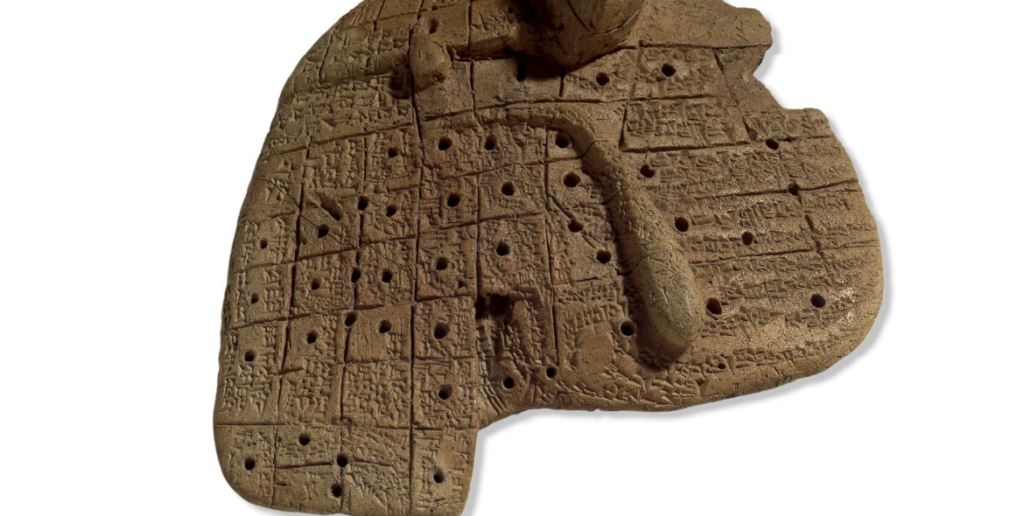
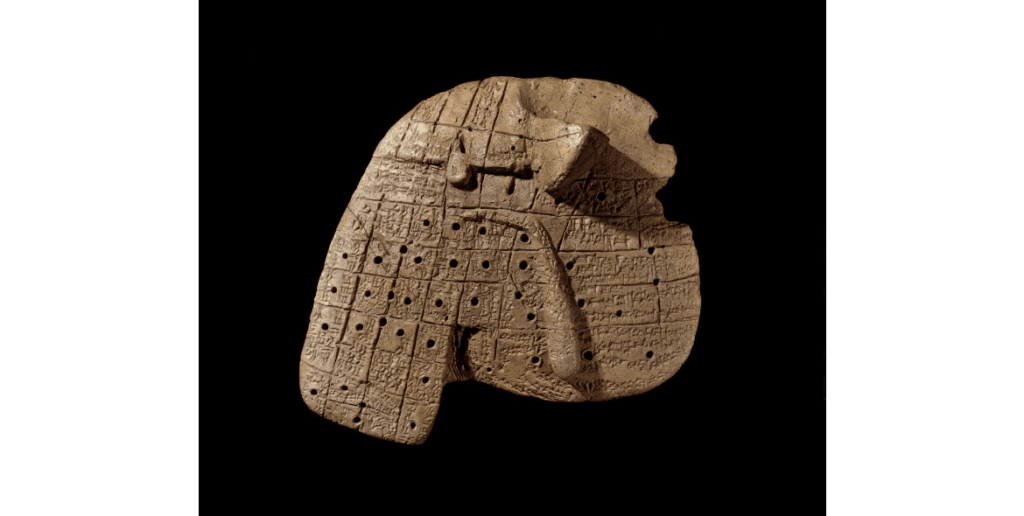
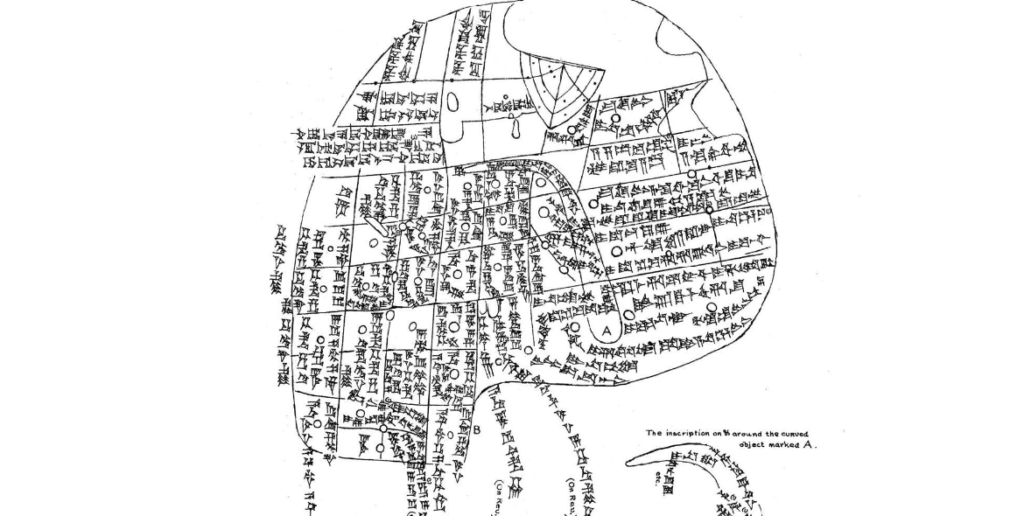
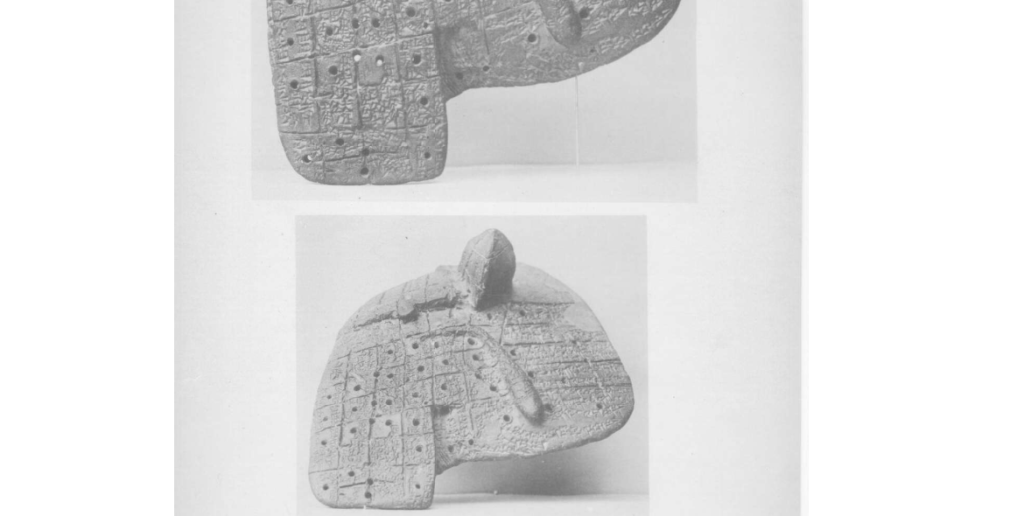
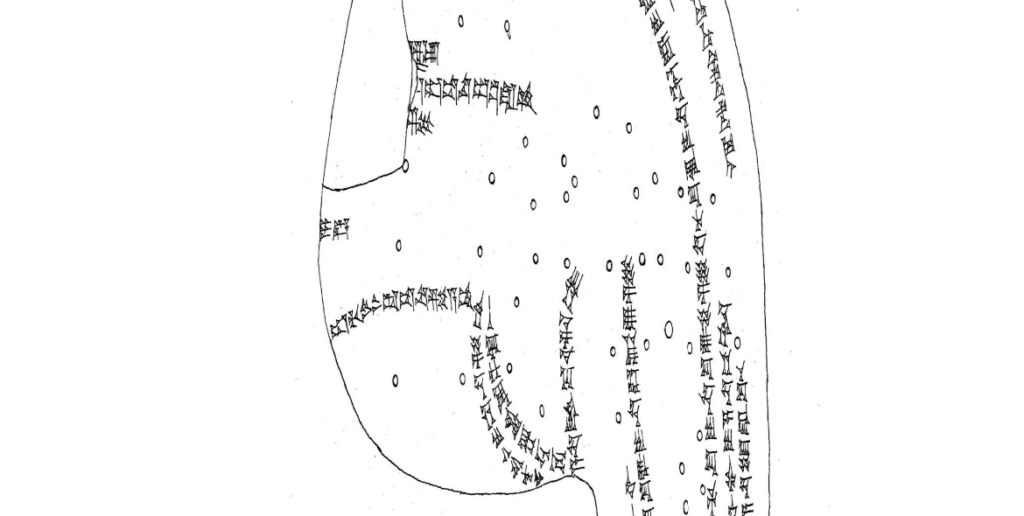
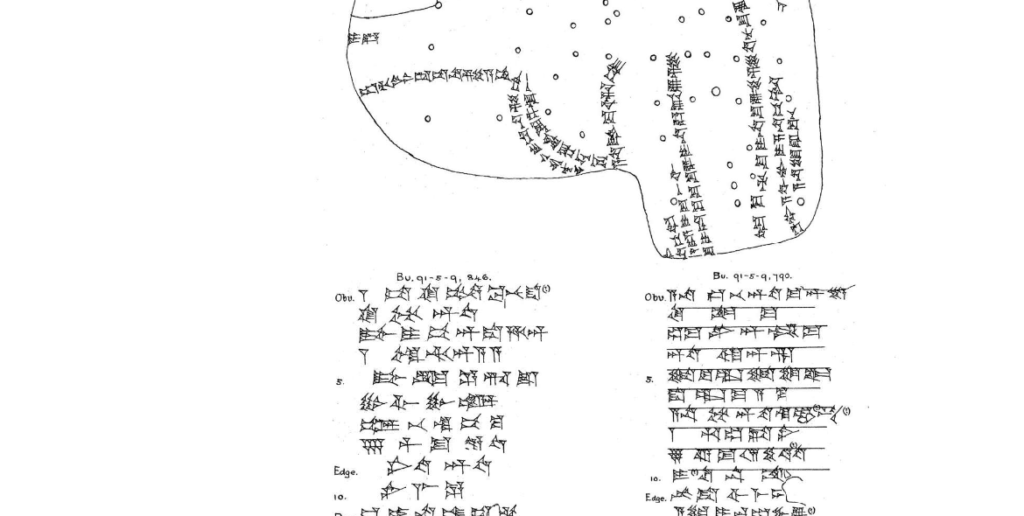
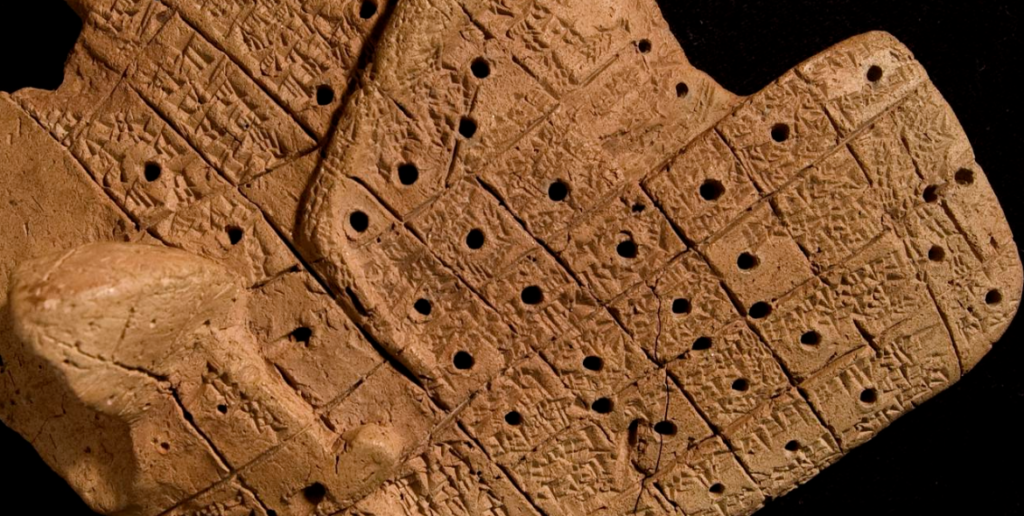
Source: British Museum.

Leave a Reply